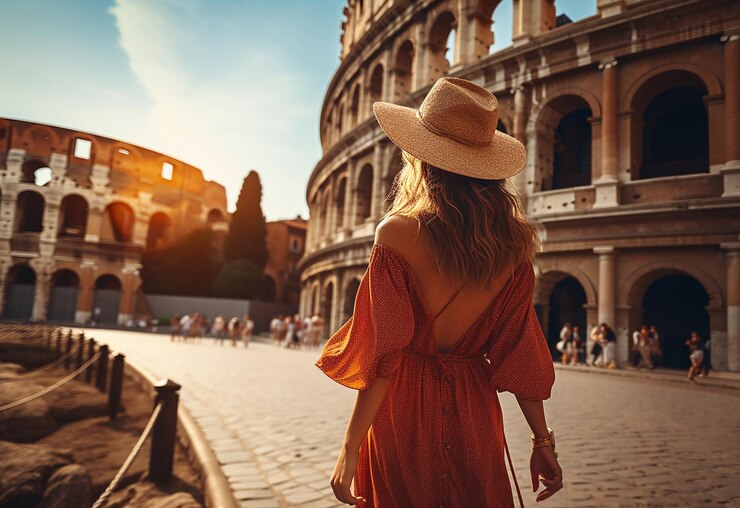
7 Hidden Gems in Rome That Tourists Often Miss
Rome, the Eternal City, is a myriad of ancient ruins, majestic piazzas, and riddle-like cobbled avenues with thousands of fantastic tales. The city never ceases to charm the tourists, no matter how many times you have visited it.
Well, of course, no visit to Rome would be complete without the sight of the Colosseum and throwing a coin in the Trevi Fountain, but beyond crowded landmarks, the city also offers many tranquil corners that soothe our souls.
Not to mention the finest hotels and luxury stay-ins like Portrait Roma. This Boutique Hotel Rome portrays the charm of the Eternal City like none other. The best part about this hotel is its unbeatable location. It’s just a few steps from the iconic Spanish Steps making it a gateway to the most delightful and historic spots in Rome.
Let’s walk you through the seven lesser-known wonders in Rome that, unfortunately, most tourists tend to miss:
1. Piccola Londra - A Surprising English Charm in the Center of Rome
Piccola Londra, or little London, is an attractive row of pastel buildings with complementary front stoops and courtyards that were built in an effort to make Rome appear modern in the early 20th century. Its popularity ensures that this little place still maintains a whimsical and exclusive attitude.
The travelers seeking elegance in the heart of the city, Portrait Roma offers a boutique stay and is an ideal place for your adventures. If you want to experience the tranquility and prime photo opportunities of Piccola Londra, it is best to visit the street at the beginning of the day.
2. The Aventine Keyhole - One Panorama, Two Nations
You may assume that it’s an ordinary green door, but when you lower to your knees, and look through that minute keyhole, a miraculous scene opens up, a magnificently clipped hedge framing St. Peter’s Basilica.
What you may not know is that the door is located inside the Priory of the Knights of Malta, a sovereign nation in and of itself. Staring through this keyhole, you are looking at a view from Italian soil into the Vatican City. Enjoy a quieter, yet more appealing side of the magic at dusk when the lights glimmer and the crowds thin.
3. Rome Beneath Rome - A Journey Through the Case Romane del Celio
People tend to concentrate on Rome’s skyline panorama, but very few look at what is under it. Down there, you’ll find the Case Romane del Celio, an ancient network of Roman homes underground beneath the Basilica of Saints John and Paul. Find frescoed walls, long, thin passages, and old mosaics that come alive as representations of daily life in Rome. History buffs will feel as if they have stepped through a time portal.
4. The Magic Door (Porta Alchemica) - Rome’s Mystical Side
The area around Piazza Vittorio keeps the secrets of occult lore. The Porta Alchemica, or Magic Door, is from the 1600s and is the only surviving gate from Palombara’s villa. A story of folklore tells of an alchemist who disappeared via the gate, leaving behind a mysterious formula to turn metal into gold. It was impossible because nobody could crack the code, so Palombara had the formula inscribed on the door, just in case a genius ever stumbled upon it. You, perhaps? So, be ready for an enigma that challenges your imagination or your decoder ring.
5. Protestant Cemetery - A Silent Final Refuge in Eternal Rome.
The Non-Catholic Cemetery is the most peaceful haven in all of Rome. Close to the Pyramid of Cestius are poets John Keats and Percy Bysshe Shelley, resting next to other famous personalities. With its shady trees and peaceful paths, here is a rare feeling of quietude where Rome speaks in soft whispers. A relaxing place for a quiet break from daily frenzy.
6. Parco degli Acquedotti - Contemporary Garden of Ancient Engineering
Although the city’s aqueducts are celebrated, few people realize they can stroll beneath these ancient arches. Just beyond the center of Rome, you’ll find Parco degli Acquedotti, a massive patch of green. Standing beside cypress trees and Rome’s laid-back joggers or picnickers in search of a peaceful afternoon, the Aqua Claudia and Aqua Felix stand high in the fields.
Become a part of the park by renting a bike or by simply taking a picnic to the meadow.
7. Basilica of San Pietro in Vincoli - Where Michelangelo’s Moses Sculpture is Housed
While Michelangelo’s David is a famous sculpture, his portrayal of Moses creates an atmosphere of dramatic intensity. This sculpture, eight feet tall and standing in a tranquil basilica at the top of the Esquiline Hill, would once have been one of the pieces on show in Julius II’s huge tomb. Every inch of Moses is a masterpiece; his muscular arms and flowing beard are breathtakingly intricate. It’s all due to a Hebrew Bible misunderstanding, which describes Moses as having horns that were mistranslated as rays of light.
Conclusion
These hidden spots are not in every travel guide, but they are the keys to an authentic Rome experience. So, whenever you are in Rome, step away from the typical tourist traps and discover the hidden gems that will give you true magic, while choosing yourself a perfect place to stay.






















